1946-1953 BSA Junior Parabike
1946-1953 BSA Junior Parabike: Boy’s Model PJ/1
16 Inch Frame
20 Inch Wheels
JOHNNY WILL BE SIX IN OCTOBER… but the war has taken away his birthday present – that BSA Junior bicycle his Dad promised him.
We’re sorry to disappoint you Johnny – but we promise not to forget you. We can’t make your machine now because soldiers need bicycles – and it’s out job to supply the soldiers first.
But we’ll tell you something – we’ve learnt a lot about making bicycles in wartime, and by waiting until the war ends you’re going to get a much better one than you’ve ever imagined.
When you go riding down the street on your post-war BSA Junior bicycle you’ll be the envy of all your friends, and they’ll be asking you for a ride on your exciting new bicycle.
You’ll be glad you waited then!
It’s interesting that the above 1944 BSA advert mentions a new BSA Junior bicycle that would be available after the war. Because, apart from the adult BSA Paratroop version of this bike, the BSA Junior Parabike was BSA’s first bike to be sold after wartime production ended. It would seem that BSA had designed it during the war. I assume they’d been considering how to market the BSA Airborne to the home market even while making them for the military. The Junior Parabike was announced to the public in the 21st November 1945 issue of Cycling:
‘The BSA Junior Parabike, a novel design that the dealers are distributing in time for Christmas. Its appearance is based on the famous BSA model used by British parachute troops.’
“The Cycle of Tomorrow for the Children of Today”
The BSA Junior Parabike was inspired by the BSA Airborne Bike used during WW2. Not everyone’s father would have used a BSA Airborne Bicycle. But no doubt most boys would have wished their fathers had jumped out of planes with paratrooper bikes to help defeat the enemy.

It was sound marketing strategy from BSA – as you can see from the Parabike advert above, boys and girls could gaily ride their parabikes while army paratroopers were parachuting down behind them with the real thing.
BSA JUNIOR PARABIKES

After WW2, industry was still controlled by the Government. Exports were the number one priority in order to repay the massive war debts. The BSA Junior Parabike was one of many product lines available for export.
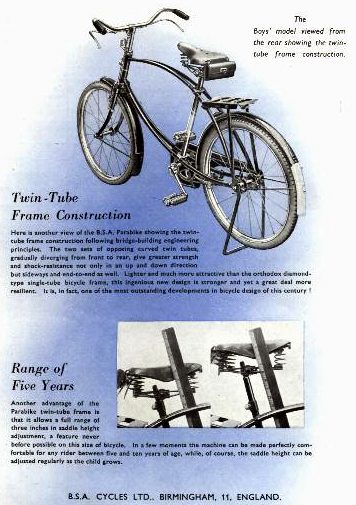
The correct name of the WW2 paratrooper bicycle is ‘BSA Airborne Bicycle’ rather than ‘parabike.’ When you observe these adverts, you can see how BSA themselves contributed its usage toward common English language. Very few Junior Parabikes have survived, and most people now use the term to describe the original military version.
Above, the girl’s version; below, the boy’s. As I’m sure you already know, Kirkpatrick Macmillan, mentioned above, and who lived 1812-1878, was the inventor of the rear-wheel driven bicycle.
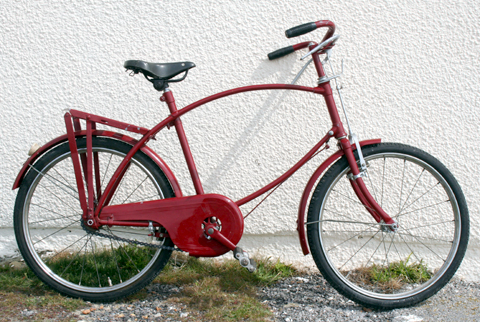
This BSA Junior is in very good condition. It was painted red sometime in the past ten years.

It’s a shame these are such rare bikes. I’m sure lots of dads would love to buy Junior Parabikes for their sons to accompany them at shows and rallies.
**********************
1952 BSA BROCHURE
*********************
JUNIOR PARABIKE v ADULT AIRBORNE BICYCLE
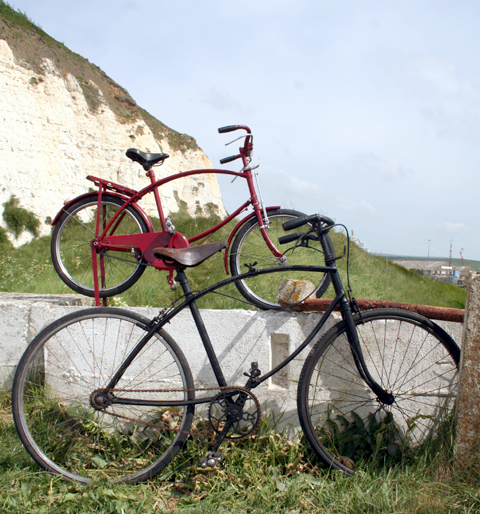
Compare the size of the Junior Parabike with an adult Airborne.
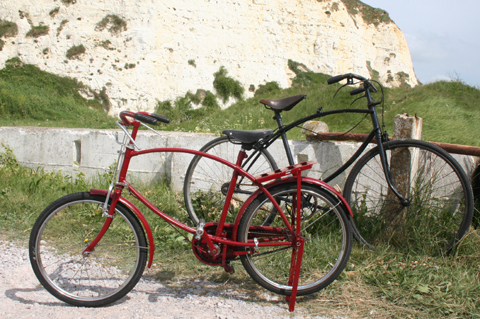
And here’s Junior with his relatives…
**********************
1953 BSA CATALOGUE
**********************
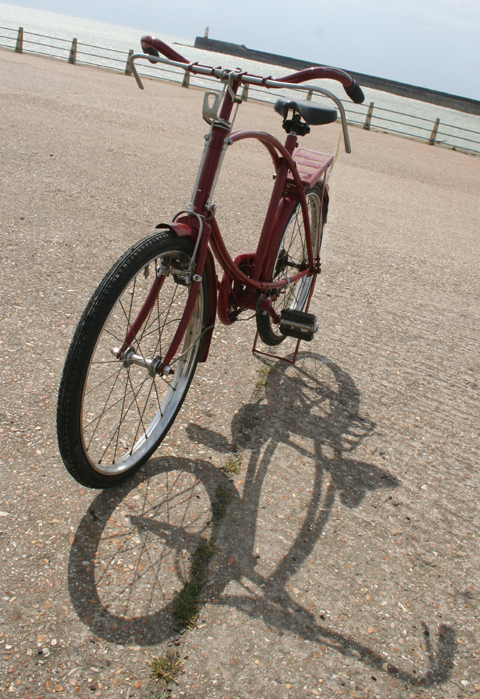
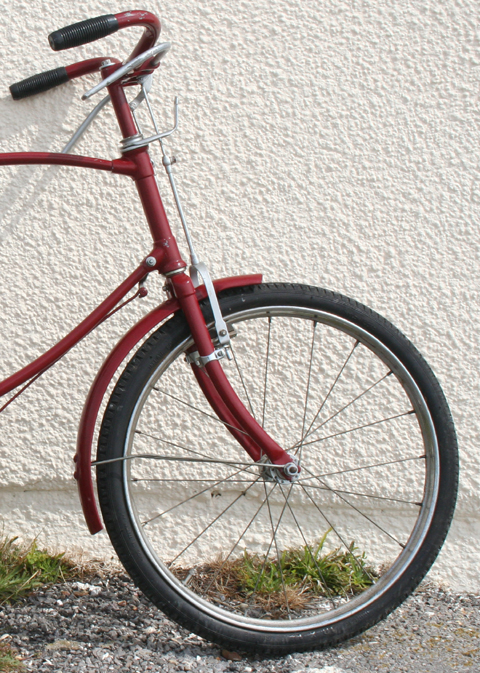
********************
THE HOME GUARD
The Home Guard was formed when there was a real risk of invasion. Most men who could fight were already in the forces, those that were left were either too young, too old, or in reserved occupations (those jobs vital to the war effort). The men who volunteered to join the Home Guard at this time were expected to fight an invasion of crack German troops with nothing more than a collection of old shotguns and pieces of gas pipe with bayonets welded on the end!
The government was expecting 150,000 men to volunteer for the Home Guard. Within the first month, 750,000 men had volunteered, and by the end of June, 1940, the total number of volunteers was over one million. The number of men in the Home Guard did not fall below one million until they were stood down in December 1944. The Home Guard was disbanded on 31st December,1945.
The Home Guard was formed with the intention of delaying an enemy invasion force for as long as possible and to give the Government and the regular army time to form a front line from which the enemy invasion could be repelled. When they were first formed, the Home Guard were expected to fight highly trained, well armed, German troops using nothing but shotguns, air rifles, old hunting rifles, museum pieces, bayonets, knives and pieces of gaspipe with knives or bayonets welded on the end.
In fine Home Guard tradition, the BSA Junior Parabike patrols the Sussex coastline.

















